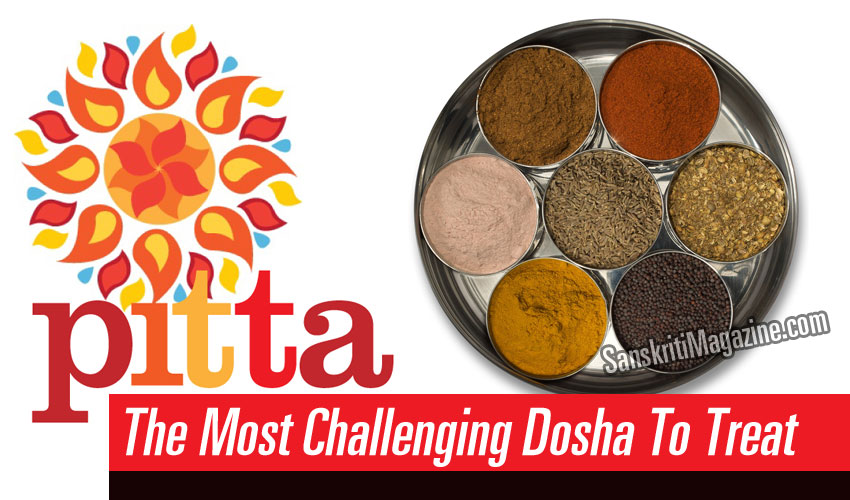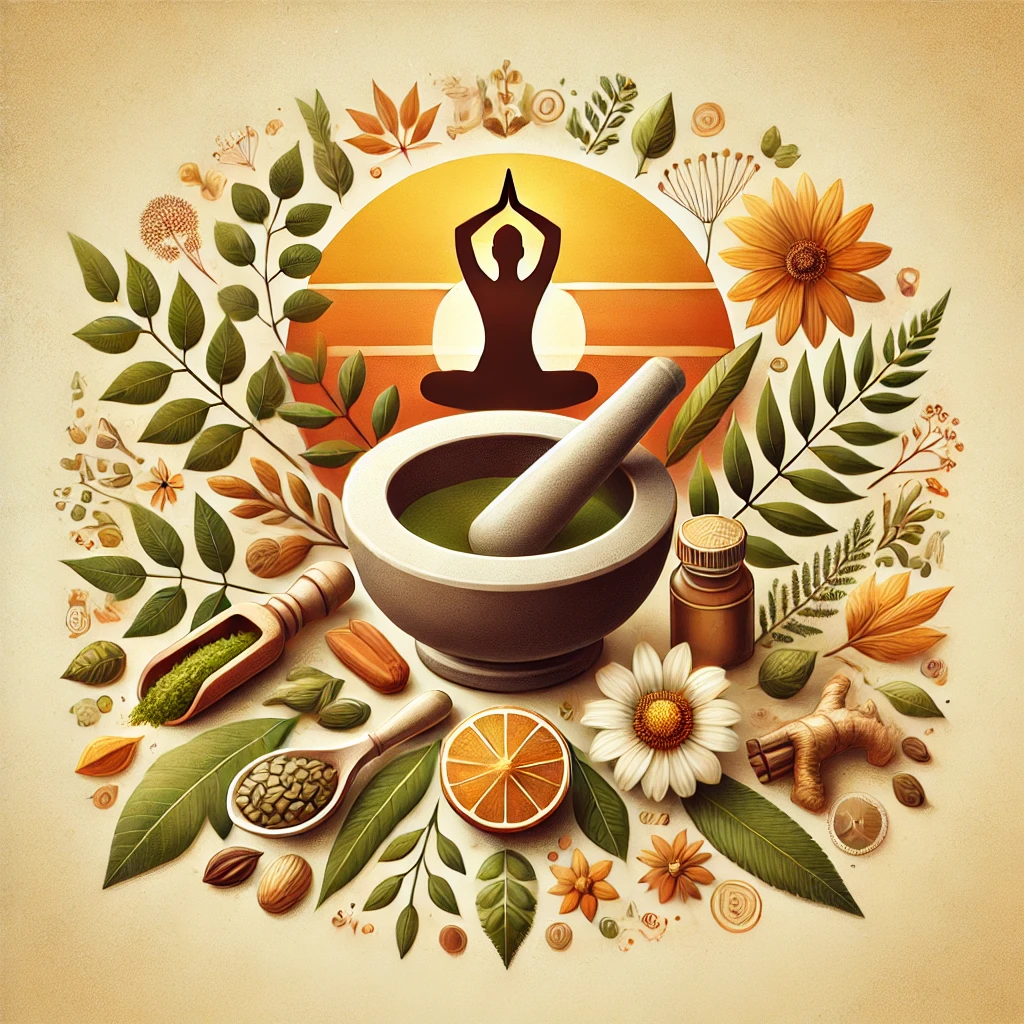~By Vaidya Mishra:
Pitta Aggravation:
Pitta body-types receive more agni by nature. It’s just the way they’re born. A chili plant receives more agni than a zucchini plant by nature. That can’t be changed, but when pitta body-types get pitta aggravation, the joy of being pitta goes away.
The pitta body-type itself is very sensitive to manage. There is no buffer in the pitta physiology. If toxins must be removed, they can easily heat the body, or damage it when they come out. It takes real skill to handle pitta body types.
When you add a pitta aggravation to the mix, the challenge becomes that much more difficult. If the liver is toxic, and the blood is full of amavisha (toxicity), you have to take baby steps to get the body clean. It can take years to detox because each bit of toxin that gets removed must be neutralized immediately to prevent a reaction.
To further complicate the situation, as the body gets detoxified, the channels become more open and clean and the agnis of the body begin to burn more brightly. This is a good thing because it means that the body does not make ama (partially digested food) so easily anymore. But as agni increases, body heat can increase too. In a body that already has a lot of heat, increased agni can be a blessing in disguise.
In this situation, we need extra special treatment. Vaidya Mishra has developed a new Pitta Masala and Pitta Tea to bring the needed balance.
Is Pitta Pacifying Spices Bland?
You might be thinking that a spice mix without heating spices could be boring. Certainly, it won’t have the pop that Mom’s Masala or Shroto Shudhi Masala has. But pitta people generally dislike anything that makes them hotter, like those spice mixes do.
On the other hand, pitta people have an uncanny ability to discern subtle flavors and aromas. This spice mixture is full of subtlety. Like Vaidya Mishra’s other masalas, different foods will bring out different flavors in the mix. Any pitta palate will find satisfaction in the taste and coolness in the after effect.
Understanding Pitta and Agni More Deeply:
According to Shaka Vansya Ayurveda, pitta can be thought of as fuel, like gasoline, which is comprised of lots of agni (fiery component of prana) and some soma (cool, nourishing component of prana). The soma aspect keeps pitta liquid so that it can flow in the body, and it keeps it cool so that it does not burn the channels when it flows. Pure agni (fire) would not be transportable in the body, but pitta, with its liquid form, flows easily to wherever it is needed.
Whenever an organ or cellular system needs real flame (agni) to digest, metabolize or transform something, the pitta fuel is ignited. This ignition takes place in the burners (sandhis, or gaps) and produces the needed flames (agnis) in the stomach (jataragni), in the liver (bhutagnis), between each dhatu as one tissue is transformed to another tissue (dhatvagnis) and on the cellular level (dehagnis).
The flame (agni) is what is cooking (or transforming), not the gasoline (pitta). It is challenging here because pitta must maintain some coolness otherwise spontaneous combustion can occur. And yet, pitta can’t be kept too cool, because it won’t flow through the channels if it congeals.
Another concern is the gap (sandhi), or burner, which must be kept clean and intelligent so that it can transform the pitta (gasoline) to flame (agni) in just the right amount whenever it is needed. The intelligence of the body controls the fire, just like a cooking stove must constantly be adjusted depending on what is being cooked.
Challenges for Pitta in this Day and Age:
In today’s world, there is an over-abundance of agnea (hot) food, toxic food. Hot, acidic, chemical food is the norm these days. In addition, it is common to skip or delay meals, and to spend hours upon hours exposed to electromagnetic radiation from computers, cell phones, and many other sources. All of these things burn soma, which is the balancing factor for agni. Even the water we drink is acidic and full of chemicals. What’s a poor pitta person to do?
When the environment contains too much agni, there is no soma for the body to receive. It is really challenging for pitta people who’s pitta is out of balance to stay calm, stay effective, and stay healthy.
The Wrong Way to Pacify Pitta:
One way to pacify pitta, which doesn’t work well, is to give lots of soma-predominant food and spices. These super cooling foods can freeze the pitta and block the channels, just like ghee becomes solid in cold weather. When the channels are blocked by the cold treatment, the pitta cannot move to where it is needed in the body where transformation needs to take place—in the stomach, liver, dhatus, and cellular systems. Then the flames (agnis) go out, or go low, and ama becomes an everyday phenomenon. This, of course, is a vicious cycle because ama further blocks the channels and contributes further to the demise of agni.
Also, the congealed pitta, from the freezing treatment, can get stuck inside the burners, which are essentially gaps. When the burners are clogged, no matter how much fuel is there, no flame can be ignited.
Vaidya’s Masala Recipe for Pitta:
After years of experience taking care of high-pitta/low-agni individuals and high-agni/low-pitta individuals, Vaidya Mishra came up with this unique spice mix when dealing with a very high pitta body type with high pitta and high agni. This person was not even able to handle Mom’s Masala, and certainly not Shroto Shudhi Masala in his food.
This recipe calms the heat of pitta, opens the channels of the five sub-doshas of pitta (pachaka, stomach; ranjaka, liver; sadhaka, heart; alochaka; eyes; brajaka, skin), and opens and cleans the macro and micro burners of the body. The delicate balance of spices in this mix make it ideal for balancing pitta without causing further problems from the treatment.
Pitta Masala Ingredients:
- Fennel balances the warming effect of turmeric
- Coriander binds toxins in the blood and cools the organs and cellular system
- Cumin opens the pitta channel of jataragni (stomach agni) and cleans the burner
- Turmeric increases the intelligence of the liver (used in very small quantity for pitta)
- Green cardamom is aromatic, enhances liver intelligence, supports protein metabolism
- Rose buds cools sadhaka pitta (in the heart); Kalunji, cools kayagni (body heat)
- Curry leaf removes toxins from liver without heating it
- Clove opens the channels and burners without heating
- Rose hips give flavor, open the heart lotus and pacify sadhaka pitta.
Vaidya’s new Pitta Masala can now be purchased online.
Viadya’s Tea Recipe for Cooling Pitta:
In addition to spices, Vaiyda has created a tea recipe that can help cool the body without freezing the pitta or putting out the agni. This delightful flavor has a great effect on the pitta constitution.
PItta Tea Ingredients:
- Fennel gently stimulates agni without heating, and coordinates the effects of all the other herbs
- Rose buds are particularly cooling for sadhaka pitta (the pitta governing the heart and emotions)
- Rose hips add flavor, open the heart lotus and pacify sadhaka pitta
- Rosemary opens the dehagni (cellular metabolism) and helps connect heart and mind
- Indian Sarsaparilla cools and cleans meda (fat tissue) which holds heat in the body
- Pushkarmool pacifies pitta and opens the lung channels
- DGL (deglycerized licorice) pacifies pitta in all organs and cellular systems, especially the stomach
- Tej patta (cinnamon leaf) increases the intelligence of the pancreas, liver and spleen, and is less heating than cinnamon bark
- Parijat, Lord Shiva’s favorite flower, helps the pitta physiology by making it more intelligent, so the body does not receive too much agni from the environment.
About Author:
He is an Ayurvedic general health practitioner as well as dermatologist, product formulator, researcher and educator, Vaidya Rama Kant Mishra was born into a family of Raj Vaidyas that boast of a 5000-year-old History of healing – the familial lineage is mentioned in the ancient Vedic text, the Puranas.
Vaidya Mishra is currently working as an independent researcher, product formulator and educator. He has designed a series of workshop for healers wishing to master the Transdermal Marma System. He also offers one-on-one individualized educational consultations for optimal health and well-being.










